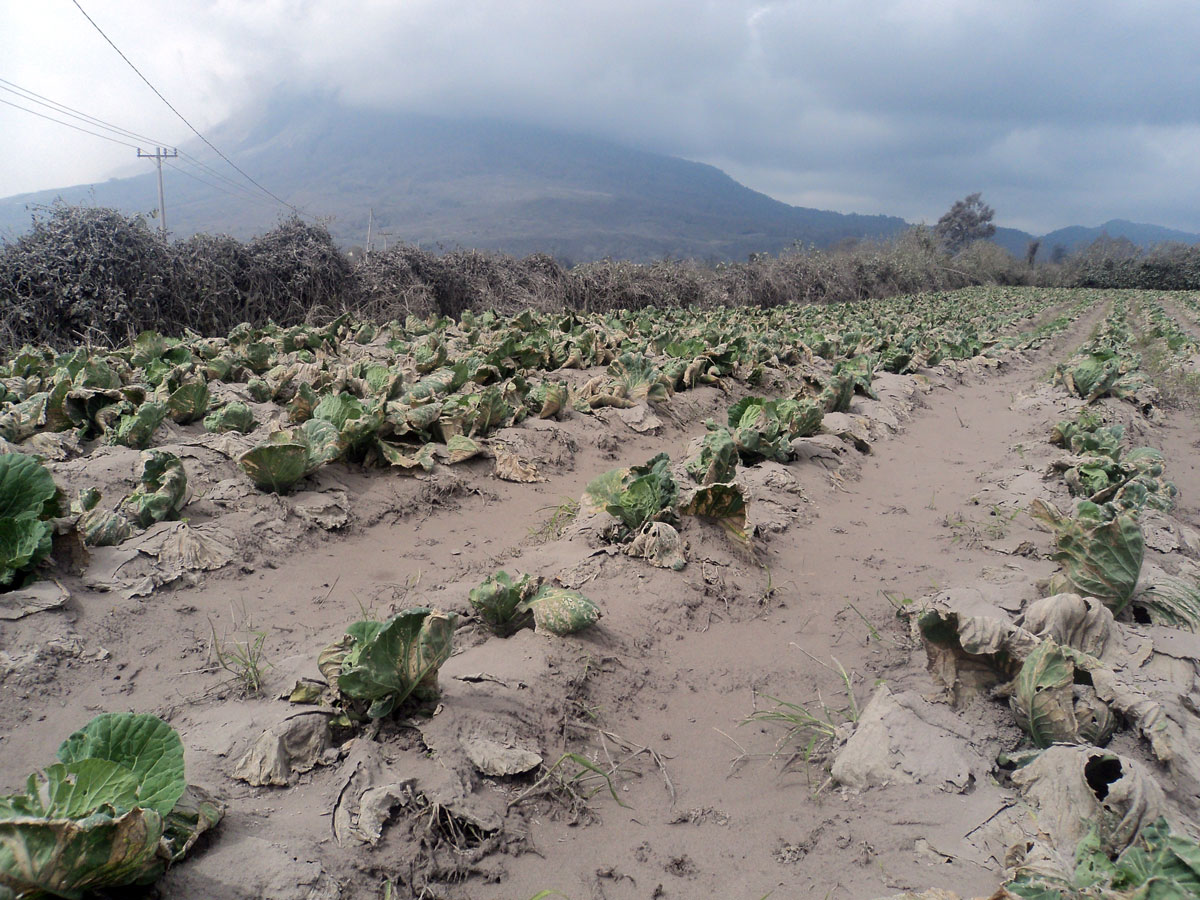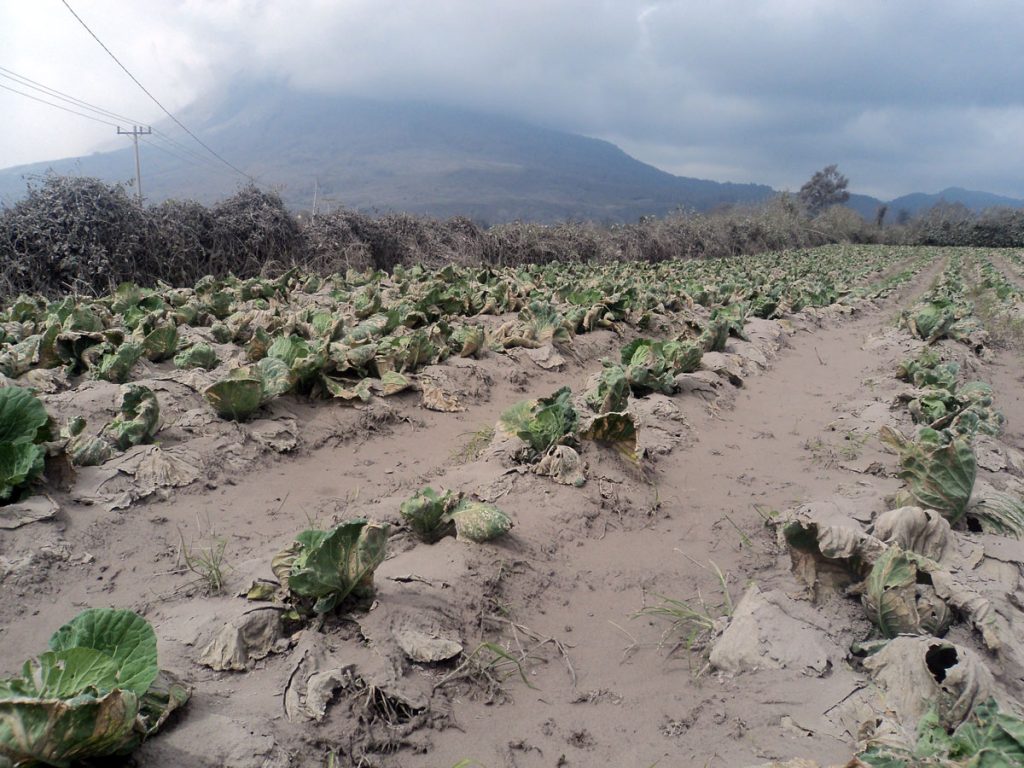By: Dian Fiantis and Budiman Minasny
Bali’s Mount Agung is likely to erupt soon. This eruption will be a catastrophic event, lava and ashes with high temperatures will be ejected causing severe risk to humans and their livelihoods. Ashes from the volcano will cause damages to farmers, destructing their crops and burying their farms. The ashes can also be harmful to human health and animals. They damage infrastructures, and cause disruptions to air flights and land transportation. However, the aftermath of a volcanic eruption leads to world’s most fertile and productive soils. Volcanic soils, which came from the ashes, only cover 1% of the Earth’s surface, but they can support up to 10% of the world’s population.
Indonesia is situated on the Pacific Ring of Fire, and has experienced many volcanic eruptions. Throughout the history, Indonesia’s volcano eruptions has affected the world’s climate, notably the volcano of Lake Toba with its super-eruption at c. 74,000 BC, which caused a long 6-year volcanic winter. Mount Tambora’s powerful eruption in 1815 caused a year without summer in Europe, and the Krakatoa explosion in 1883 also dropped the world’s temperature.
The eruption of Mount Tambora in 1815 has negatively affected the population at nearby islands including Bali where its agriculture was destroyed by ash deposits and lack of sunlight. It was estimated that this disaster and despair lasted more than 10 years before the ashes turned into fertile soils. Although the 1963-1964 Mount Agung eruptions are much smaller, they still caused lots of damages to farmers and killed at least 1500 people.
In the past decade, volcanoes in various parts of Indonesia have been quite active and erupted, notably Merapi (2010) in Central Java, Sinabung (2014) in North Sumatra, Kelud (2014) in East Java, and Rinjani (2016) in Lombok. Despite the danger posed by these volcanoes, areas with high volcanic activity also have some of Indonesia’s most fertile lands.
During the colonial period, a Dutch scientist, Prof. E.C.J. Mohr, recorded that in 1930s the island of Java has a high population density compared to other islands (Sumatra and Kalimantan). The density of Java in 1930 is 316 people per square km, while in Kalimantan is only 11 people per square km. He suggested that this large difference is due to its soil. The soil in Java is made from volcanic ash and very fertile. Currently Java carry more than 1100 people per square km, probably due to its abundant rich soil. We also witnessed after Mt. Galunggung in West Java erupted in April 1982, ten years later crop productivities in the local area of Tasikmalaya were increased.
As soil scientists, volcanic eruptions gave us opportunities to study the beginning of soils, which usually cannot be seen in our lifetime as it takes thousands to hundreds of thousands of years to make 1 meter of soil. We analysed the deposited volcanic ashes to investigate their minerals which contain lots of nutrients. We also study how the ashes breakdown or weather due to chemical and biological processes. As the ashes weather, they will release the nutrients and also have the capacity to hold more water and nutrients. Furthermore, the ashes have a large capacity to sequester carbon, in other words, taking CO2 out of the atmosphere and put it in the soil.
In April 2005, Mount Talang in West Sumatra erupted, we collected tephra (the scientific name of volcanic ashes) which were deposited in the Solok District. We conducted an experiment by adding these ashes to local soil to simulate ash deposition. Within 2 months, blue-green algae already started to colonize the bare surface tephra layer. After 16 months, the surface of tephra was transformed into a film of lichen. Grasses and shrubs were only established after 2 years. The pristine ashes contain negligible organic material, but after 46 months, the tephra has accumulated organic matter at a concentration of 1.75% of carbon. This means that the volcanic ash through plant can sequester carbon out of the atmosphere in large amounts and put the carbon in the soil.
Volcanic Ash from Mt Sinabung covering farmer’s field.
In January 2014, Mount Sinabung erupted with pyroclastic flow and “mud rain”. Ashes covered the nearby Sigarang Garang village. When we visited the village early this year, we saw that some of the ashes were already colonised by lichens, and some with grasses. The ashes which were colonised by lichens have already accumulated a substantial organic matter, up to 4% of organic carbon. In addition, the ashes contain a high amount of nutrients, notably Calcium, Magnesium, Potassium, and Phosphate. It was estimated that the ashes covered approximately 100 million cubic metres, which is equivalent to 250 million tons. This means that we already have a reserve of 1 to 10 million tons of fertilizers.
This supports Prof. Mohr’s theory that Indonesia can sustain such as high population density due to the presence of active volcanoes. The regular eruptions throughout Indonesia caused devastation to the people living around the volcanoes. The positive outcome of this natural event is that it renews our soil. However it takes time for the ashes to be weathered and released the nutrients. We need to assure local farmers that the eruption is a blessing in disguise, this natural event is what keeps Indonesian soils fertile. We need to convince local farmers that the ashes are valuable future fertilizer reserves, not to be sold as sands for building materials. Out of the darkness, new fertile soils will formed.
CV
Professor Dian Fiantis is a professor of Soil Mineralogy of Universitas Andalas, Padang. Her research interest is in studying volcanic ash materials and soils in Indonesia, in particular how they weathered.
Professor Budiman Minasny is a professor of Soil-Landscape modelling at The University of Sydney. He is passionate about the role of soil in managing climate change, food, water, energy security and maintaining biodiversity.


Leave a Reply